Mongolia. Part IV. Steppe and desertMapJuly 19–30, 2006 Steppe, steppe everywhere — this Russian folk song aptly describes Mongolia. 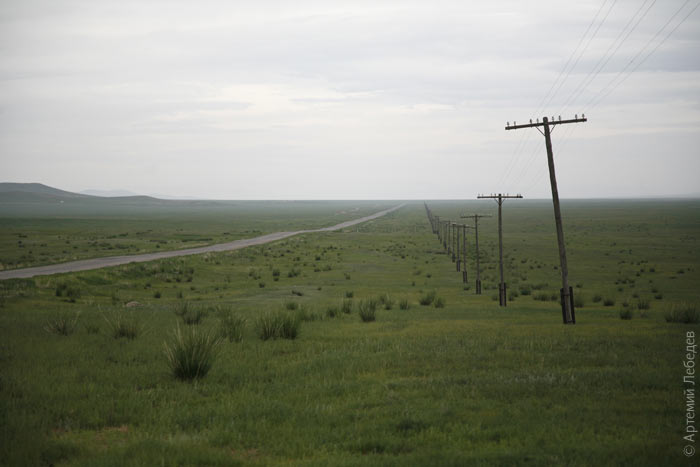 The nature is beautiful, I wouldn’t mind leading a nomadic existence here myself. 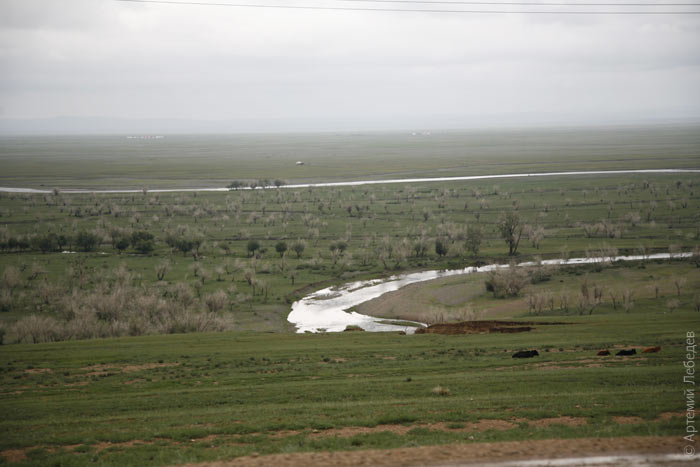 The natural phenomena here are vivid and rich. Thunder crashes for forty minutes straight, rolling from side to side. Here’s rain approaching the yurt camp. 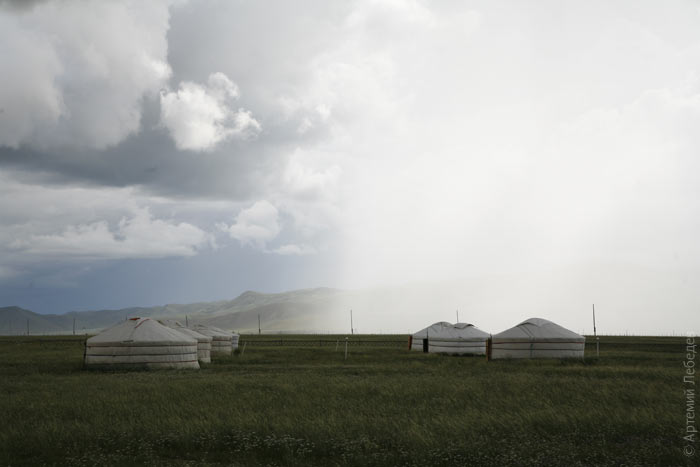 It turned out that the camp sat on the migratory path of gross black bugs of some sort, similar to bark beetles. My urge to become one with nature dissipated when I scooped out a pot full of these bugs from under my blanket and pillows. So I moved to a hotel owned by a Mongolian sumo champion (see part I). The part of the steppe where it’s hot and no grass grows is called the Gobi desert. That’s where we’re headed. 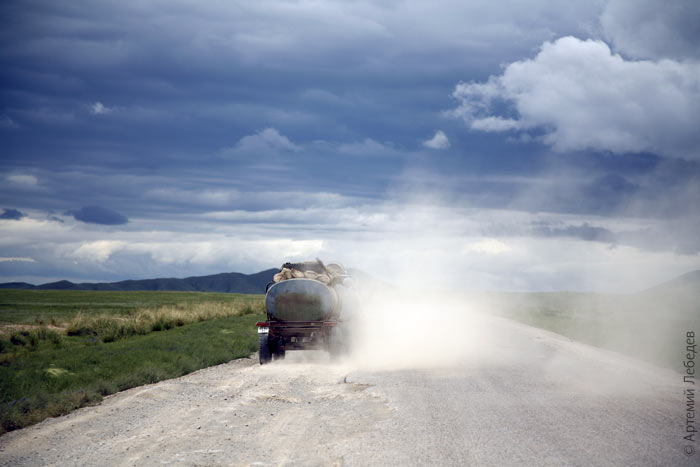 Since I’d asked obo for rain, I hardly saw any deserty desert — vegetation had had time to sprout. The camels grazing nearby tucked in happily.  They’ve found dinosaur skeletons in these parts. 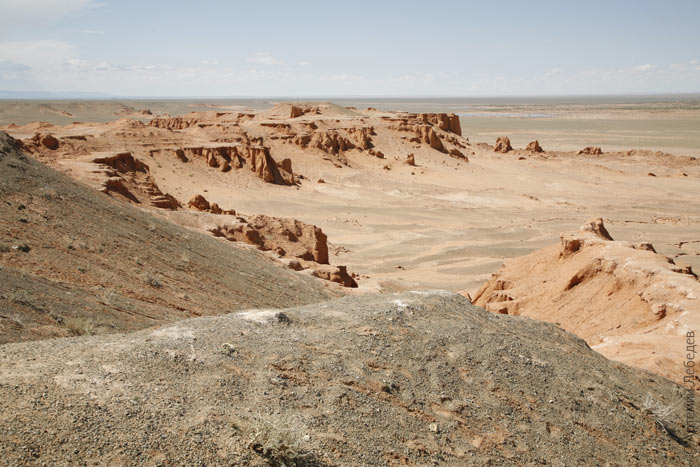 There used to be a lot of them here. 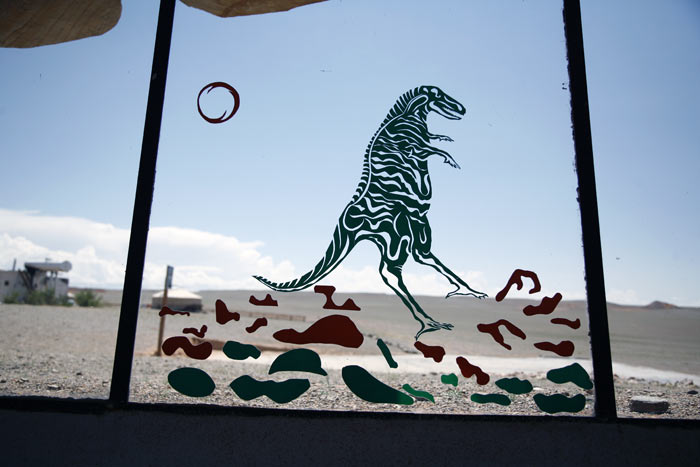 They don’t show the dig sites to the tourists to stop them feeling tempted to pinch a diplodocus egg or similar (in any event, customs would confiscate it). Thus we had to settle for camel bones. 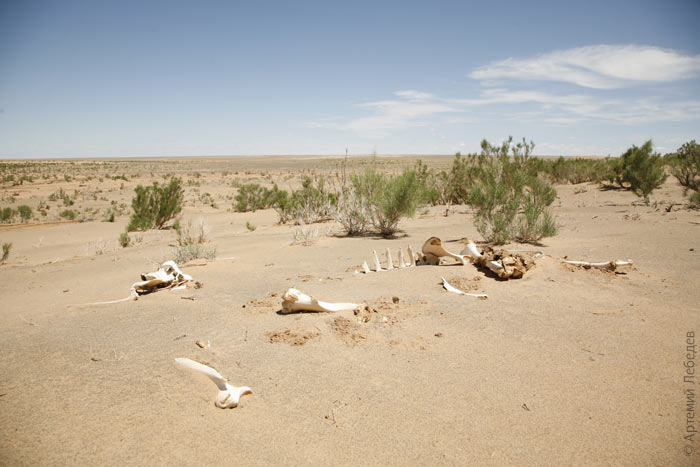 Sometimes you see the remains of other animals. 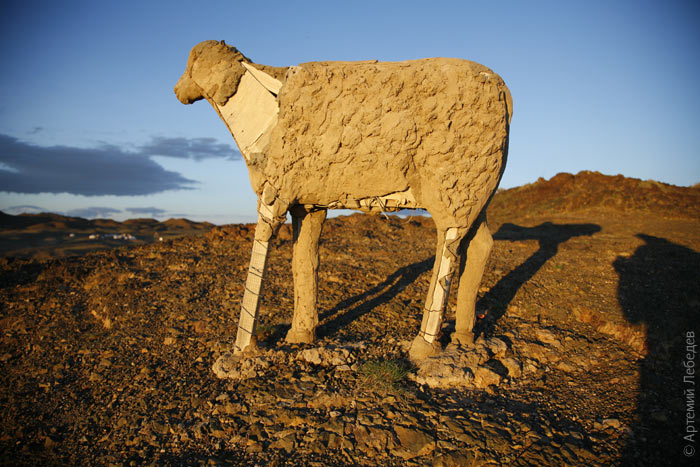 Or this — the ruins of a Buddhist temple. 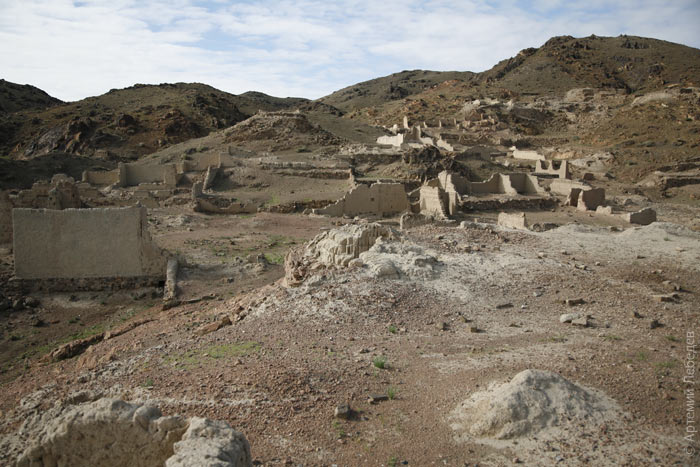 The oldest extinct species here is the Rafik van. 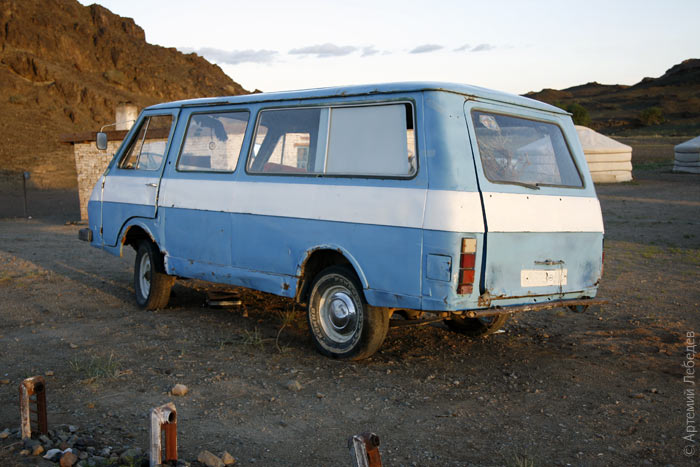 There’s a cafeteria in the middle of the desert. 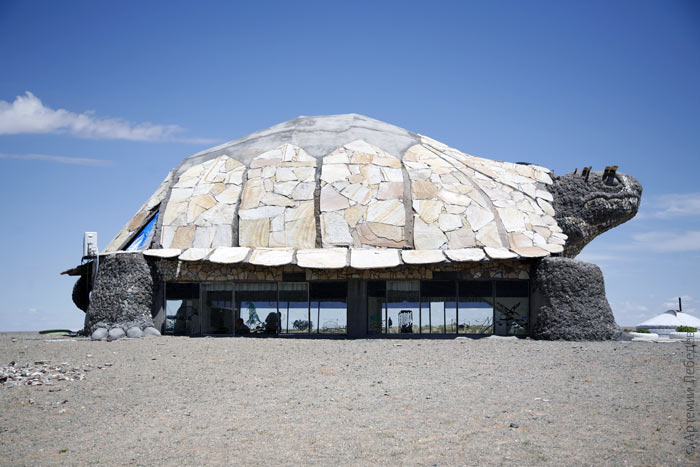 Lots of stars are out at night, the yurt doubles as a UFO. 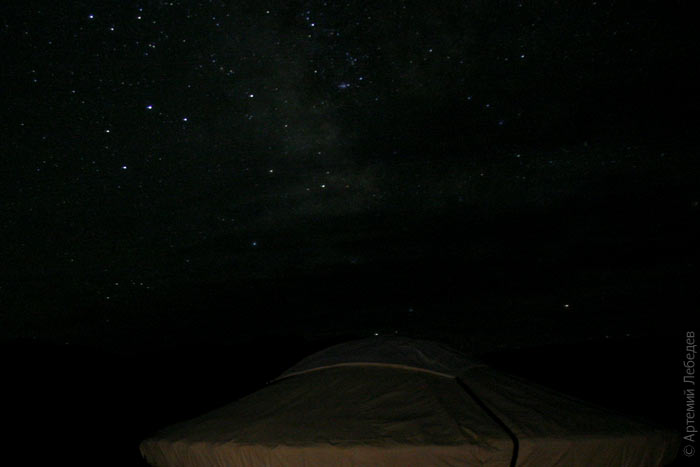 At some point I came across a makeshift oasis, like a scene out of the Soviet sci-fi movie “Kin-dza-dza”. The family spends its days pumping water to the veggie garden by hand. It’s flourishing, despite being surrounded by completely scorched land.  From a distance the dunes around Khongor are very fetching. But the very first time you climb up onto a crescent- shaped dune, or barkhan, strong winds send hot sand streaming at your body from head to toe. It looks awesome. However, afterwards I spent the whole day shaking sand out of my ears, plus my camera lens made crunching sounds for a whole week. 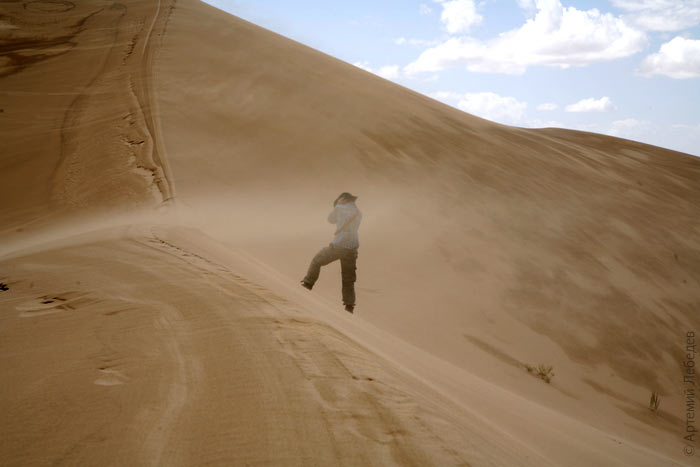 Herders sell entirely uninteresting rocks. It comes as no surprise that the only interest they’ve aroused is the goats’. 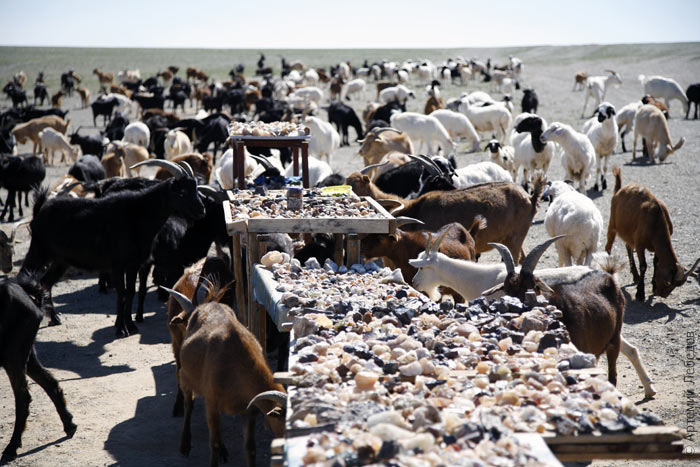 A Fokker 50 lands right in the middle of the desert to pick up tourists from all of the yurt camps. 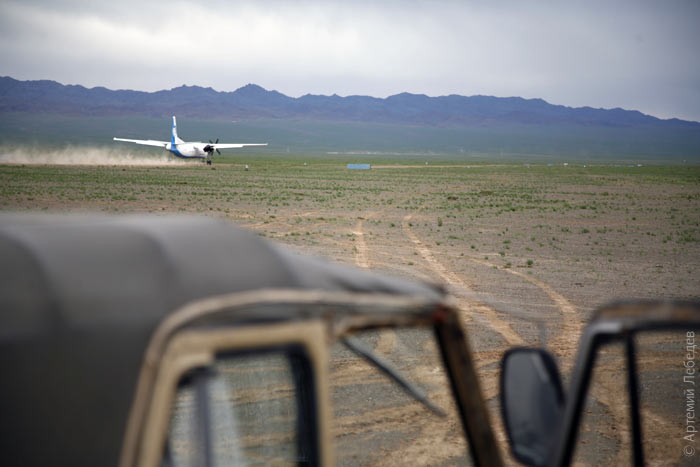 Progress and civilisation are swiftly advancing on the Gobi. The yurts are already equipped with minibars. Laying fibre-optic cables is the next step. 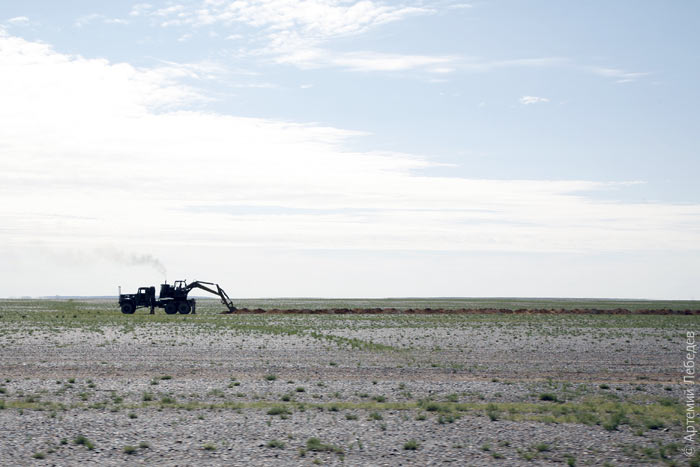 Soon civilisation, definitive and irreversible, will take hold. It’s a shame the dinosaurs didn’t live to see it. 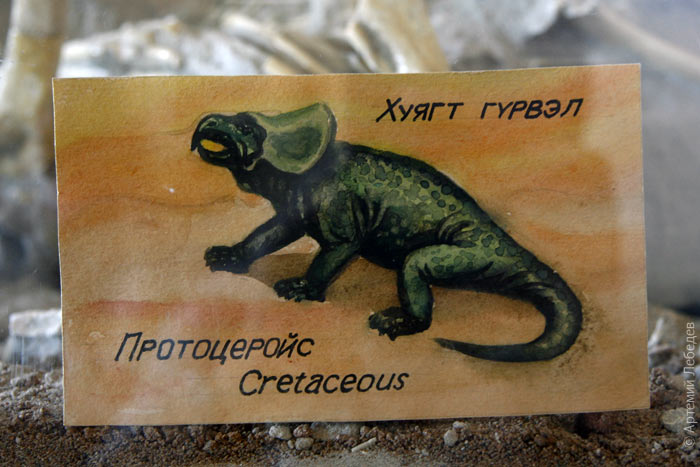 Protoceratops Cretaceous |